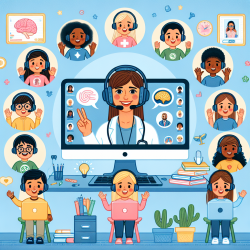Introduction
In the realm of speech-language pathology, particularly in pediatric settings, the integration of innovative technologies can significantly enhance therapeutic outcomes. One such emerging technology is the use of ultraviolet-C (UV-C) radiation, primarily recognized for its disinfection properties. The research article, "Models for an Ultraviolet-C Research and Development Consortium," highlights the potential of UV-C technology in healthcare, offering insights that can be applied to improve pediatric therapy environments.
Understanding UV-C Technology
UV-C radiation, with wavelengths between 200 nm and 280 nm, is known for its germicidal properties, effectively reducing pathogens in healthcare settings. The research underscores the importance of developing a consortium to standardize and enhance UV-C applications, which could lead to widespread adoption in various environments, including schools and therapy centers.
Implications for Pediatric Speech Therapy
In pediatric speech therapy, maintaining a clean and safe environment is crucial. The application of UV-C technology can significantly reduce the risk of infections, particularly in settings where children are vulnerable to communicable diseases. By adopting UV-C standards and practices, speech therapists can ensure a healthier environment, ultimately leading to better therapy outcomes.
Data-Driven Decisions in Therapy Settings
Data-driven decision-making is at the heart of effective speech-language pathology. The research highlights the need for standardized testing methods for UV-C devices, which can provide reliable data on their efficacy. By leveraging this data, speech therapists can make informed decisions about incorporating UV-C technology into their practice, ensuring that the tools they use are both effective and safe for children.
Encouraging Further Research
While the current research provides a strong foundation, further studies are necessary to explore the specific applications of UV-C technology in speech therapy settings. Practitioners are encouraged to engage in research initiatives, contribute to the development of standards, and collaborate with interdisciplinary teams to advance the use of UV-C technology.
Conclusion
The integration of UV-C technology into pediatric speech therapy holds promise for creating safer and more effective therapy environments. By participating in consortia and contributing to research, speech-language pathologists can play a pivotal role in advancing these technologies. For those interested in delving deeper into the research, the original paper provides comprehensive insights and can be accessed here.










